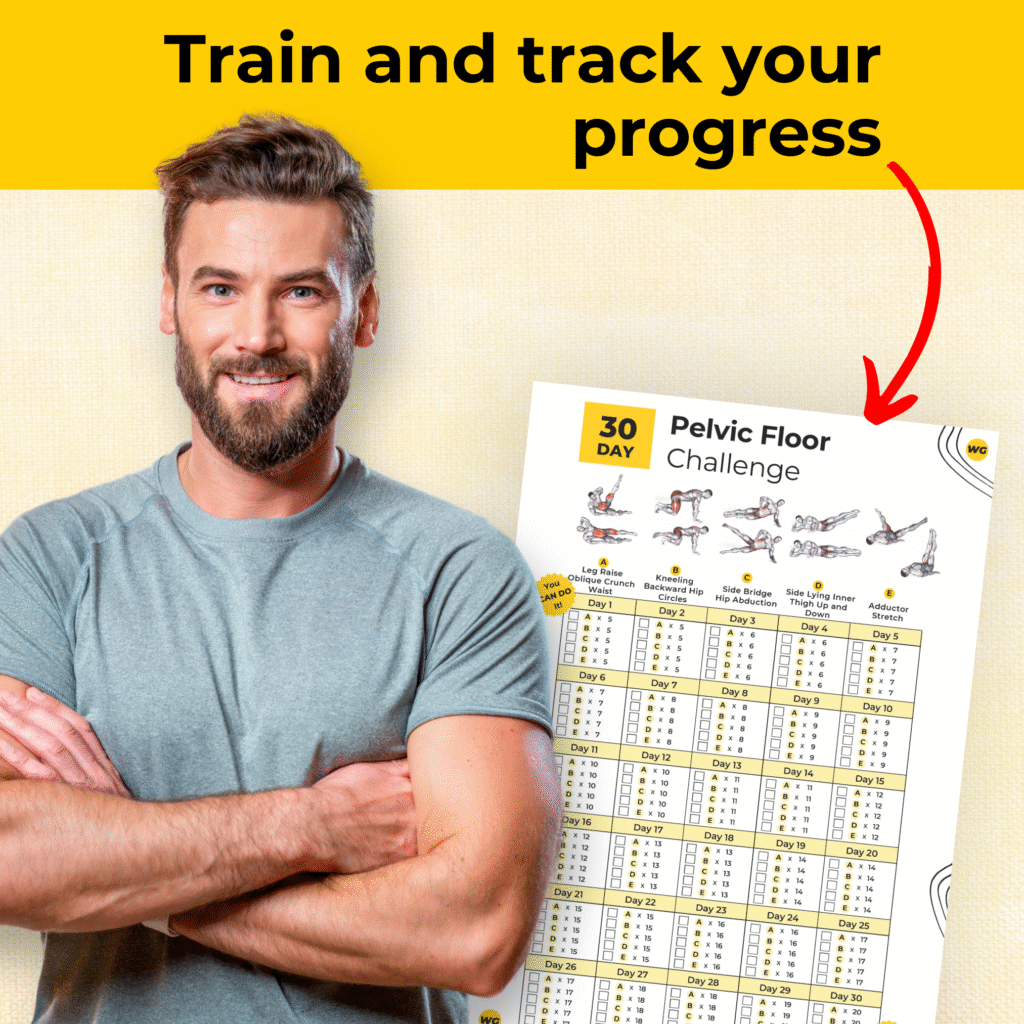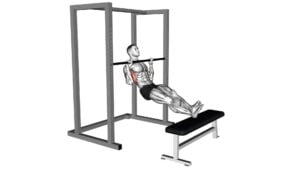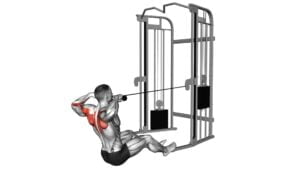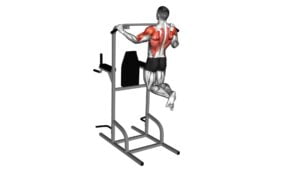Seated Pull-up – Video Exercise Guide & Tips

Looking to improve your upper body strength? Check out our Seated Pull-up – Video Exercise Guide & Tips.
Watch This Exercise Video
In this article, we'll show you the proper form, how to set up your chair, and how to engage your back muscles effectively.
Plus, we'll share breathing techniques for maximum results and common mistakes to avoid.
Whether you're a beginner or an advanced user, we've got progressions and variations to challenge you.
Let's get started!
Key Takeaways
- Seated pull-ups provide a similar upper body workout as traditional pull-ups but with less stress on the joints.
- The exercise targets the back, biceps, and shoulders.
- Seated pull-ups allow for adjustment of weight resistance, making them suitable for beginners and advanced exercisers.
- Proper form and technique are crucial to avoid injuries and maximize the benefits of seated pull-ups.
Proper Seated Pull-up Form
To perform a seated pull-up correctly, position yourself on the seat with your feet secured and grasp the handles with an overhand grip. Seated pull-ups are a great alternative to traditional pull-ups because they provide a similar upper body workout while putting less stress on your joints. This exercise targets your back, biceps, and shoulders, helping to build strength and muscle in those areas.
One of the benefits of seated pull-ups is that they allow you to modify the intensity of the exercise by adjusting the weight resistance. By adding or removing weight plates, you can tailor the exercise to your fitness level and gradually increase the challenge as you get stronger. This makes seated pull-ups suitable for beginners and advanced exercisers alike.
Another advantage of seated pull-ups is that they offer a safer and more controlled environment for performing the exercise. With your feet secured and the seat providing stability, you can focus on proper form and technique without worrying about balance or falling. This can help prevent injuries and ensure that you're targeting the correct muscles effectively.
Setting Up Your Chair
To ensure proper form and maximize the benefits of the seated pull-up, it's crucial to set up your chair correctly. Start by adjusting the chair height so that your feet are flat on the ground and your knees are at a 90-degree angle.
Make sure the chair is stable and provides adequate support for your weight.
Chair Height Adjustment
Adjust the height of your chair before beginning the seated pull-up exercise. This step is crucial to ensure proper form and maximize the effectiveness of the exercise.
Start by positioning yourself on the chair with your feet flat on the ground. The chair should be at a height that allows your knees to be bent at a 90-degree angle. This will provide stability and support during the exercise.
Additionally, make sure the chair backrest is positioned upright, providing a solid surface for your back.
The hand grip position is also important. Place your hands shoulder-width apart on the bar, ensuring a comfortable and secure grip.
Stability and Support
Position yourself on the chair with your feet flat on the ground to ensure chair stability and back support for the seated pull-up exercise. This is crucial for maintaining a stable and safe position throughout the exercise.
Make sure your chair is sturdy and placed on a level surface. Adjust the height of the chair so that your knees are bent at a 90-degree angle and your feet are firmly planted on the ground. This will provide a solid base and prevent any wobbling or shifting during the exercise.
Additionally, ensure that the backrest of the chair is adjusted to support your lower back, providing stability and preventing any strain on your spine.
Taking these steps will help you maintain proper form and maximize the effectiveness of the seated pull-up exercise.
Engaging Your Back Muscles
Engage all of your back muscles by utilizing proper form and incorporating a variety of pulling movements. Back exercises are essential for strengthening your back muscles and improving overall posture and stability. When performing exercises such as the seated pull-up, it's crucial to focus on engaging the specific muscles in your back.
To effectively engage your back muscles during a seated pull-up, start by sitting upright with your feet flat on the ground and your hands gripping the bar shoulder-width apart. As you pull yourself up, concentrate on contracting your latissimus dorsi, or lats, which are the large muscles that run down the sides of your back. Imagine pulling your elbows down and towards your hips, engaging your lats to initiate the movement.
In addition to targeting your lats, it's important to engage the muscles in your upper back, such as the rhomboids and trapezius. Squeeze your shoulder blades together at the top of the movement, focusing on contracting these muscles. This will help improve your posture and strengthen the muscles that support your spine.
Incorporating a variety of pulling movements, such as rows and pull-downs, into your workout routine can further enhance the engagement of your back muscles. By targeting different angles and muscle groups, you can ensure balanced development and maximize the effectiveness of your back exercises.
Remember to always prioritize proper form and technique when performing back exercises. Engaging your back muscles correctly won't only help you achieve better results but also reduce the risk of injury.
Breathing Techniques for Maximum Results
To maximize your results during a seated pull-up and further enhance the engagement of your back muscles, it's important to focus on proper breathing techniques. Proper breathing can have several benefits when performing this exercise:
- Increased Oxygen Intake: Deep breathing allows for a greater intake of oxygen, which provides energy to your muscles and helps them work more efficiently.
- Improved Stability: By coordinating your breath with the movement, you can stabilize your core and maintain proper form throughout the exercise.
- Enhanced Mind-Muscle Connection: Focusing on your breath can help you develop a stronger mind-muscle connection, allowing you to better isolate and activate your back muscles during the pull-up.
- Reduced Fatigue: Proper breathing helps to flush out waste products, such as carbon dioxide, from your muscles. This can help reduce fatigue and allow you to perform more reps with better technique.
- Increased Endurance: By practicing controlled breathing during your seated pull-up, you can improve your endurance and extend the duration of your workout.
Common Mistakes to Avoid
To prevent potential errors and improve your performance, it's crucial to be mindful of common mistakes while performing seated pull-ups. By avoiding these mistakes, you can reduce the risk of injuries and ensure that you're executing the exercise correctly.
One common mistake to avoid is using an improper grip technique. It's important to grip the bar firmly with your hands shoulder-width apart. Make sure that your palms are facing away from you and that your fingers are wrapped around the bar. This grip will provide you with the necessary stability and strength to perform the exercise effectively.
Another mistake to steer clear of is using momentum to complete the movement. Many people tend to use their lower body to generate momentum and swing themselves up. This not only takes away from the targeted muscles but also increases the risk of injury. Instead, focus on using your upper body strength to pull yourself up in a controlled and steady manner.
Lastly, avoid hunching your shoulders or arching your back during the exercise. This can put unnecessary strain on your neck, shoulders, and back, leading to discomfort or injury. Keep your shoulders down and back, maintaining a neutral spine throughout the movement.
Progressions and Variations for Advanced Users
You can challenge yourself and take your seated pull-ups to the next level by incorporating progressions and variations designed for advanced users. Here are some advanced pull-up variations and techniques that will help increase resistance levels and further enhance your strength and endurance:
- Weighted Seated Pull-ups: Attach a weight plate or wear a weighted vest while performing seated pull-ups to increase the resistance and make the exercise more challenging.
- One-Arm Seated Pull-ups: Remove one hand from the bar and perform the exercise with only one arm. This variation targets the muscles more intensely and requires greater core stability.
- L-Sit Pull-ups: Lift your legs straight out in front of you while performing seated pull-ups to engage the core and increase upper body strength.
- Muscle-Up Pull-ups: Start with a seated position and transition into a full muscle-up by pulling your body up and over the bar, using a combination of pulling and pushing movements.
- Archer Pull-ups: Perform seated pull-ups by leaning to one side and extending one arm fully while the other arm assists. This variation targets the muscles asymmetrically and helps improve stability and control.
Incorporating these advanced variations into your seated pull-up routine will allow you to continuously challenge yourself and make progress in your strength training journey. Remember to always maintain proper form and gradually increase the difficulty level to avoid injury.
Frequently Asked Questions
What Are Some Alternative Exercises for the Seated Pull-Up?
Looking for alternative exercises for the seated pull-up? You might want to try lat pulldowns and assisted pull-ups.
These exercises target the same muscles as the seated pull-up and can be great alternatives if you're unable to perform the seated pull-up.
Lat pulldowns specifically focus on your latissimus dorsi muscles, while assisted pull-ups provide additional support to help you build strength and eventually progress to unassisted pull-ups.
Incorporating these exercises can help you achieve a full upper body workout.
How Long Should I Hold Each Repetition of the Seated Pull-Up?
To increase your strength in seated pull-ups, it's important to focus on the duration of each repetition. Aim to hold each repetition for about 1-2 seconds at the top of the movement, where your chin is above the bar. This will help build muscle endurance and improve your overall performance.
Avoid the common mistake of rushing through the exercise by swinging or using momentum. Control the movement and engage your back muscles for maximum benefit.
Can I Use Resistance Bands to Assist With the Seated Pull-Up?
Yes, you can definitely use resistance bands to assist with the seated pull-up. Using resistance bands for other exercises is a great way to increase the challenge and intensity of your workouts.
The benefits of resistance band training include improved strength, flexibility, and muscle endurance. By incorporating resistance bands into your seated pull-up routine, you'll be able to gradually increase your strength and eventually perform the exercise without assistance.
Is It Necessary to Warm up Before Performing the Seated Pull-Up?
Before performing the seated pull-up, it's important to warm up to prevent injury and maximize your performance. Stretching before the exercise helps to increase flexibility and range of motion, reducing the risk of strains or pulls.
Beginners can modify the seated pull-up by using resistance bands to assist with the movement until they build enough strength to perform the exercise without assistance.
Warming up and modifying exercises are essential for a safe and effective workout.
Should I Perform the Seated Pull-Up With an Overhand or Underhand Grip?
To decide whether to perform the seated pull-up with an overhand or underhand grip, it's important to understand the benefits of each.
An overhand grip primarily targets the muscles in your upper back, while an underhand grip emphasizes your biceps. Both grips engage your lats and shoulders.
Consider your goals and which muscles you want to focus on when choosing your grip. Experiment with both to find what feels most comfortable and effective for you.
Conclusion
In conclusion, the seated pull-up is a highly effective exercise for targeting and strengthening your back muscles.
By properly setting up your chair and engaging your back muscles, you can maximize the benefits of this exercise.
Remember to focus on your breathing techniques to achieve optimal results.
Avoid common mistakes and gradually progress to advanced variations for continuous improvement.
Incorporate the seated pull-up into your workout routine to enhance your overall strength and fitness level.

Author
Years ago, the spark of my life’s passion ignited in my mind the moment I stepped into the local gym for the first time. The inaugural bead of perspiration, the initial endeavor, the very first surge of endorphins, and a sense of pride that washed over me post-workout marked the beginning of my deep-seated interest in strength sports, fitness, and sports nutrition. This very curiosity blossomed rapidly into a profound fascination, propelling me to earn a Master’s degree in Physical Education from the Academy of Physical Education in Krakow, followed by a Sports Manager diploma from the Jagiellonian University. My journey of growth led me to gain more specialized qualifications, such as being a certified personal trainer with a focus on sports dietetics, a lifeguard, and an instructor for wellness and corrective gymnastics. Theoretical knowledge paired seamlessly with practical experience, reinforcing my belief that the transformation of individuals under my guidance was also a reflection of my personal growth. This belief holds true even today. Each day, I strive to push the boundaries and explore new realms. These realms gently elevate me to greater heights. The unique combination of passion for my field and the continuous quest for growth fuels my drive to break new ground.







